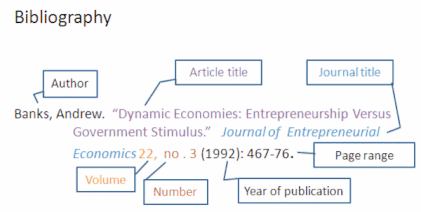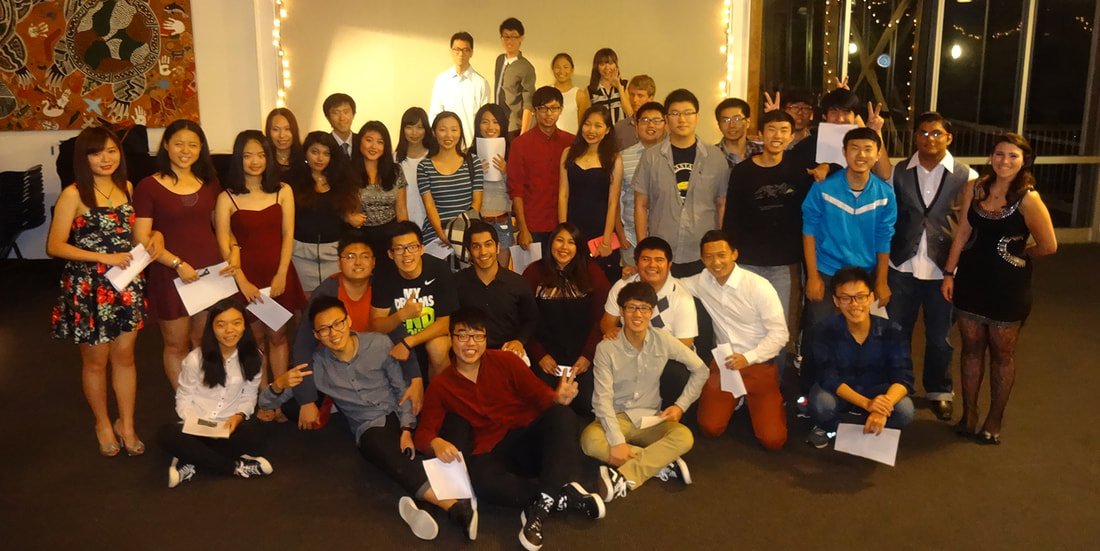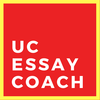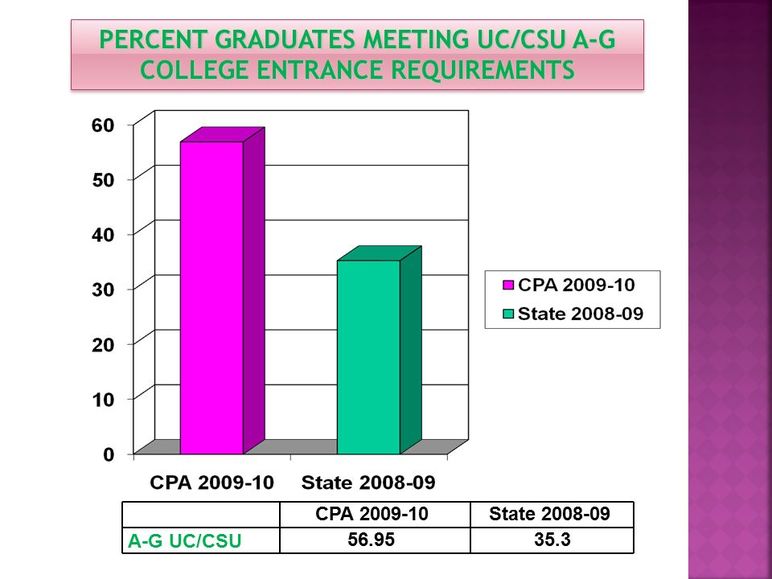 Rachel McCombie, a graduate of St John’s College, Oxford, shares actionable tips on taking your essays from “Good” to “Outstanding.” For ambitious students, essays are a chance to showcase academic flair, demonstrate original thinking and impress with advanced written English skills. The best students relish the challenge of writing essays because they’re a chance to exercise academic research skills and construct interesting arguments. Essays allow you to demonstrate your knowledge, understanding and intelligence in a creative and relatively unrestricted way – provided you keep within the word count! But when lots of other people are answering the same essay question as you, how do you make yours stand out from the crowd? In this article, we’re going to show you the secret of writing a truly brilliant essay. What are essays actually for?Essays test a wide variety of skills, including your ability to absorb and analyse information. efore we get into the nitty gritty of how to write an outstanding essay, we need to go right back to basics and think about what essays are actually designed to test. Only by understanding the purpose of an essay can you really begin to understand what it is that tutors are looking for when they read your work. No matter what the academic level of the student is, essays are designed to test many things: – Knowledge – fundamentally, essays test and help consolidate what you’ve read and learned, making them an important part of the learning process, particularly for humanities subjects. – Comprehension – they test your ability to make sense of and clearly explain complex concepts and issues. – They test your ability to understand the question and produce a considered response to it. – They evaluate your ability to absorb and condense information from a variety of sources, which will probably mean covering a lot of material in a short space of time; this necessitates appraisal of which bits of material are relevant and which are not. – They test your ability to write a balanced and coherent argument that considers a number of points of view. – They showcase your level of written English skills. – They even put your time management to the test – essays are a part of your workload that must be planned, prioritised and delivered to a high standard, to deadline. Characteristics of the perfect essay Now that we know why we’re asked to write essays, what are the characteristics that define the essays that impress? The tutors marking your essays may have their own preferences and things they look for in outstanding essays, but let’s take a look at a few of the irrefutable traits of the best. A good essay can be derivative; a brilliant essay needs to be original. Original thinkingThe hallmark of the truly brilliant essay is original thinking. That doesn’t have to mean coming up with an entirely new theory; most of, if not all, the topics you’ll be studying at GCSE, A-level or even undergraduate level have been thought about in so much depth and by so many people that virtually every possible angle will have been thought of already. But what it does mean is that the essay stands out from those of other students in that it goes beyond the obvious and takes an original approach – perhaps approaching the topic from a different angle, coming up with a different hypothesis from what you’ve been discussing in class, or introducing new evidence and intelligent insights from material not included on the reading list. Solid, in-depth knowledge and understandingIt goes without saying that the brilliant essay should demonstrate a strong knowledge of the facts, and not just knowledge but sound comprehension of the concepts or issues being discussed and why they matter. The perfect essay demonstrates an ability to deploy relevant facts and use them to form the basis of an argument or hypothesis. It covers a wide range of material and considers every point of view, confidently making use of and quoting from a variety of sources. Clear structure with intelligent debateThe perfect essay provides a coherent discussion of both sides of the story, developing a balanced argument throughout, and with a conclusion that weighs up the evidence you’ve covered and perhaps provides your own intelligent opinion on how the topic should be interpreted based on the evidence covered. No superfluous informationEverything written in the perfect essay serves a purpose – to inform and persuade. There’s no rambling or going off at tangents – it sticks to the point and doesn’t waste the reader’s time. This goes back to our earlier point about sorting the relevant facts from the irrelevant material; including material that isn’t relevant shows that you’ve not quite grasped the real heart of the matter. Exceptional EnglishThe words in the perfect essay flow effortlessly, and the reader feels in safe hands. Sentences need never be read more than once to be understood, and each follows logically on from the next, with no random jumping about from topic to topic from one paragraph to the next. Spelling and grammar are flawless, with no careless typos. So how do you go about writing this mythical Perfect Essay? Read on to find out! Put in extra background workCommitted students always read beyond what the reading list tells them to read. Guaranteed to impress, wide reading gives you deeper knowledge than your peers and gives you the extra knowledge and insights you need to make your essay stand out. If you’re studying English, for example, don’t just read the set text! Here are some ideas to widen your reading and give you a good range of impressive quotes to include in your essay: – Other works by the same author – how do they compare with your set text? – Works by contemporary authors – does your set text fit into a wider movement, or is it very different from what was being written at the time? – Works by the author’s predecessors – what works inspired the author of your set text? How do you see them shining through in the text you’re studying, and how have they been developed? – Literary criticism – gauge the range of opinions about your set text by reading what the literary critics have to say. Whose opinion do you most agree with, and why? – Background history – so that you can appreciate and refer to the context in which the author was writing (we’ll come back to this last point a little later). It sounds like a lot of extra work, but you don’t necessarily have to read everything in full. It’s fine to dip into these other resources providing you don’t inadvertently take points out of context. Know what you want to say before you start writing You’re probably sick of hearing this particular piece of advice, but it’s important to start out with a clear idea in your mind of what you want to say in your essay and how you will structure your arguments. The easiest way to do this is to write an essay plan. This needn’t be a big deal, or time-consuming; all you need to do is to open a new document on your computer, type out the ideas you want to cover and drag and drop them into a logical order. From there, you simply start typing your essay directly into the plan itself. Your essay should include an introduction, a series of paragraphs that develop an argument rather than just jumping from topic to topic, and a conclusion that weighs up the evidence. Answer the question you’ve been set, not the question you want to answer A common problem with students’ responses to essays is that rather than answering the question they’ve been set, they try to mould the question to what they’d prefer to write about, because that’s what they feel most comfortable with. Be very careful not to do this! You could end up writing a brilliant essay, but if didn’t actually answer the question then it’s not going to be well received by the person marking it. Give a balanced argument… Good essays give both sides of an argument, presenting information impartially and considering multiple points of view. One-sided arguments won’t impress, as you need to show that you’ve thought about the evidence comprehensively. …but your opinion and interpretation matter tooShow that you’ve made your own mind up based on your weighing up of the evidence. This shows that you’re not just hiding behind what other people say about the topic, but that you’ve had the independence of mind to form your own intelligent opinion about it. Quote liberallyUse quotations from academic works and sources to back up points you want to make. Doing so strengthens your argument by providing evidence for your statements, as well as demonstrating that you’ve read widely around your subject. However, don’t go too far and write an essay that’s essentially just a list of what other people say about the subject. Quoting too much suggests that you don’t have the confidence or knowledge to explain things in your own words, so have to hide behind those of other people. Make your own mind up about what you’re writing about – as already mentioned, it’s fine to state your own opinion if you’ve considered the arguments and presented the evidence. Context matters Understanding the religious and political context of the times in which Blake wrote is essential to understanding his writing and art. As we’ve already touched on, if you can demonstrate knowledge of the context of the subject you’re writing about, this will show that you’ve considered possible historical influences that may have shaped a work or issue. This shows that you haven’t simply taken the essay question at face value and demonstrates your ability to think beyond the obvious. An ability to look at the wider picture marks you out as an exceptional student, as many people can’t see the wood for the trees and have a very narrow focus when it comes to writing essays. If you’re an English student, for instance, an author’s work should be considered not in isolation but in the context of the historical events and thinking that helped define the period in which the author was writing. You can’t write about Blake’s poetry without some knowledge and discussion of background events such as the Industrial Revolution, and the development of the Romantic movement as a whole. Include images and diagrams You know what they say – a picture speaks a thousand words. What matters in an essay is effective and persuasive communication, and if a picture or diagram will help support a point you’re making, include it. As well as helping to communicate, visuals also make your essay more enjoyable to read for the person marking it – and if they enjoy reading it, the chances are you’ll get better marks! Don’t forget to ensure that you include credits for any images and diagrams you include. Use full academic citations and a bibliography Show you mean business by including a full set of academic citations, with a bibliography at the end, even if you haven’t been told to. The great thing about this is that it not only makes you look organised and scholarly, but it also gives you the opportunity to show off just how many extra texts you’ve studied to produce your masterpiece of an essay! Make use of the footnote feature in your word processor and include citations at the bottom of each page, with a main bibliography at the end of the essay. There are different accepted forms for citing an academic reference, but the main thing to remember is to pick one format and be consistent. Typically the citation will include the title and author of the work, the date of publication and the page number(s) of the point or quotation you’re referring to. Here’s an example: 1. Curta, F. (2007) – “Some remarks on ethnicity in medieval archaeology” in Early Medieval Europe 15 (2), pp. 159-185 ProofreadThis much editing is a good thing; it should mean you’ve proofread thoroughly and picked up on any mistakes. Read more www.topadmit.com Before you ask, no, a spell check isn’t good enough! How many times have you typed “form” instead of “from”? That’s just one of a huge number of errors that spell check would simply miss. Your English should be impeccable if you want to be taken seriously, and that means clear and intelligent sentence structures, no misplaced apostrophes, no typos and no grammar crimes. Include your name at the top of each page of your essay, and number the pages. Also, make sure you use a font that’s easy to read, such as Times New Roman or Arial. The person marking your essay won’t appreciate having to struggle through reading a fancy Gothic font, even if it does happen to match the Gothic literature you’re studying! Meet the deadlineYou don’t need us to tell you that, but for the sake of being comprehensive, we’re including it anyway. You could write the best essay ever, but if you deliver it late, it won’t be looked upon favourably! Don’t leave writing your essay until the last minute – start writing with plenty of time to spare, and ideally leave time to sleep on it before you submit it. Allowing time for it to sink in may result in you having a sudden brilliant revelation that you want to include.
So there we have it – everything you need to know in order to write an essay to impress. If you have any further great tips to add, feel free to share them in the comments below! Source: www.oxford-royale.co.uk
0 Comments
While LA Unified continues to drive toward higher and higher graduation rates, district data provided to LA School Report show that more than half of last year’s graduates were not eligible for admission into California’s public universities. Of the Class of 2016’s 26,806 graduates, 47 percent received a C or better in all of their A through G required courses, a set of college preparation classes (see district email). The minimum requirement for admission into the state’s public universities is a C in the classes. Two years ago the school board decided to roll back graduation requirements, allowing students to pass A-G courses with a D instead of a C. At the time, school board members feared thousands of students wouldn’t graduate. The data show that their fears were founded as roughly 14,200 graduates, or 53 percent, earned at least one D. At least one school board member said she is open to reconsidering that decision, and advocates are hoping next month’s board runoff will lead to raising the graduation requirement. This week the University of California system released its admission and enrollment data for the Class of 2016, and of the top 20 schools in LA Unified with the highest UC acceptance rates, calculated by School Data Nerd blog, more than half were independent charters. Independent charters were not included in the district’s data on A-G grades. Data for this year show some improvements for the Class of 2017, who appear to be on track to surpass their predecessors with 50 percent of high school seniors as of late February earning at least a C in all A-G classes. An internal district memo also shows that 75 percent of high school seniors were on track to pass their A-G courses with a D or better as of mid-March. The data in late February showed the on-track rates for passing the A-G courses this year is 11 percentage points higher than at the same time last year. Board member Mónica García said the data indicate the district is making progress, but she’s not calling it a win yet. She said she was in favor of keeping the C minimum in 2015, but she understood the concerns and voted along with her colleagues to roll back the requirement. At the time board member George McKenna pointed out that a student who got one or two Ds might not qualify for four-year college but could go to community college or enter the military or civil service with a high school diploma. “There was a lot of concern that the structure was not in place to support that level of rigor,” García said. “I would say that by the numbers we’re seeing today, we know we can get there. We have to support more students.” She said in the future the board could revisit the issue. “I definitely think we will have to wrestle with how will we support the young people in the system with Ds and Fs that we know we haven’t tapped into their talent yet,” she said. Elmer Roldan, director of education programs and policy at United Way of Greater Los Angeles, said his organization advocated in 2015 to keep the requirement to graduate at a C. He said he recognizes that the district has been doing a better job of preparing students. “It’s still not good enough,” he said, noting that 53 percent of the graduates weren’t eligible to enroll in a four-year public university last year. Roldan said many families believe that if their student graduates high school, he or she will be eligible for college. “I think a lot of families are surprised when they find out sometimes in 11th or 12th grade that they’ve basically been lied to because they aren’t able to apply to a CSU or a UC,” he said. Roldan said the school board runoff election could determine whether the board reconsiders the C requirement. The United Way will hold a college readiness forum next month and has invited the school board candidates to participate to discuss this issue and hear from students directly. “We think the best solution is to increase the requirement and put the supports in place to ensure there is equitable distribution of teachers and resources” to every school, Roldan said. As required in the 2015 resolution, the district is working on an equity audit to analyze how students at each high school are meeting the A-G requirements. Data from the 2014-15 school year showed that high schools that had low A-G completion rates correlated with whether or not students reported that they believe most adults at the school expect them to go to college. A district spokeswoman said the district could not provide data on how many graduates in the class of 2015 received a C or better in A-G courses because it did not track the data then. The California Department of Education reported that 51.7 percent of LA Unified graduates in 2015 had completed UC/CSU required courses, however, that figure includes charter schools. In 2015, 75 percent of students in LA charter schools received a C or better in A-G courses, according to data from the California Charter Schools Association. A year ago, LA Unified Superintendent Michelle King proclaimed it was “all hands on deck” to help seniors get across the graduation stage under the new graduation requirements. The school board invested $15 million into a credit-recovery program after it was discovered in January that just 54 percent of students were on-track to complete the A-G courses. The rigor of the online credit recovery programs came under scrutiny by LA Unified watchers as well as by those within the district, including the school board president. In January, LA School Report reported that 42 percent of the graduating Class of 2016 took part in credit recovery either through re-taking courses they’ve failed or by using online credit recovery, in which most of the work is done online and over a shorter period of time. LA Unified’s credit recovery policies allow students to opt out of much of the coursework if they pass a pre-test. Other districts’ policies are stricter. The majority of credit recovery is not done online, said Carol Alexander, the district’s director of A-G intervention and support. The enhanced efforts resulted in the district’s highest graduation rate yet of 75 percent. This winter King set a lofty goal of 100 percent graduation, though she has not detailed how the district will get there. “I think it’s another sign that there is some progress being made and I’ve been one among many who question whether or not grad rates should be taken seriously when you see such low college readiness. Nevertheless, these improvements in A through G completion rates are a sign of genuine progress, we hope,” said Pedro Noguera, an education professor at UCLA’s Graduate School of Education and Information Studies. “To me it speaks to why the district needs a real strategic plan,” he said, saying that the document King produced was not a real strategic plan. “These were very ambitious goals that no district, especially no urban district in the country, has ever achieved,” he said. “It doesn’t mean a lot unless it comes with a plan of how you get from where you are to where you want to be.” While 75 percent of seniors are on-track to complete the A-G course requirements with a D or better this year, just 52 percent are on track to complete all academic requirements to graduate, which include a community service project, health and physical education requirements and that students choose electives that identify a career pathway in their junior and senior years. “Basically what draws that number down is certain requirements that are not completed until the end of the 12th year,” Alexander said. The requirements with the lowest on-track rates are service learning and social studies, which are usually not completed until the end of 12th grade. According to the district, 11 percent of students are missing one or two courses, 3 percent are missing three or four courses and 11 percent are five or more courses behind. For those students who aren’t on-track the district has deployed diploma program counselors at high schools. “It’s still about personalization and meeting one on one with students to provide a pathway to getting back on track,” Alexander said. This is done through an Individual Graduation Plan, which has been completed by 97 percent of students. At this time last year, 59 percent of high school students and 50 percent of middle school students had an IGP. “We are continuing to make progress toward our goal of graduating all students. The District’s A-G commitment ensures access and opportunity for all students so that they graduate prepared for college, career and success,” said LA Unified’s Chief Academic Officer Frances Gipson. Source: http://laschoolreport.com The best students enjoy writing essays because they’re a chance to shine; they’re an interesting intellectual exercise in which the writer must craft thoughtful arguments on complex topics within the confines of a prescribed and often restrictive word count. For many such students, each essay brings with it the challenge of making it that little bit better than the last one. The problem is that when you write essays regularly, it’s easy to get stuck in a rut of repeating the same formula each time – particularly when you already receive good feedback from the teachers who read them. So how do you take your essays to the next level and go from great to brilliant? Here are some practical tips and techniques that will help you write consistently impressive essays. 1. Read other people’s essays Offer to share your essays with other people and they may return the favour. Even better: start a study group. Just as the books you read subconsciously help mould your own writing style, so reading other people’s essays can help you develop and build on your own essay-writing style. Try to read a range of other essays, including those of your peers and of academics. Read essays on a wide variety of subjects, not necessarily just those that you’re studying; different disciplines might apply different kinds of arguments or styles, so the wider you read, the more possible techniques there are for you to pick up and use in essays of your own. As you read other people’s essays, don’t just take them at face value. Be critical: what do you like about them? What don’t you like about them? How persuasive do you think they are? Is the argument a balanced one, with points adequately supported with evidence? Has the writer used any techniques you’ve not seen before? Another good source of essays is the broadsheet newspapers. Read the opinion pieces and dissect how the writer has supported their points with evidence, and again, be critical; note where they’ve left things out to try to persuade you to a particular opinion. Essays should be balanced, so you can learn from the best of these writers and pick up some techniques to help you shape a balanced piece. 2. Build your vocabulary and use it properly A good vocabulary will allow you to express exactly what you mean, as clearly and concisely as possible. Economy with words is a characteristic of all good essays, because readers (and essay-markers) don’t like having their time wasted with long, rambling points that could have been expressed in half the number of words. One way of ensuring that you can communicate clearly and to the point is through accurate and effective use of advanced vocabulary. A good essay writer should never rest on their laurels when it comes to vocabulary; it’s something you should be working on continually, as there are always new words to learn that could help convey a point more effectively. What’s more, deploying a good vocabulary displays intelligence and allows you to be more persuasive in your essay-writing. Here are some ways in which you can build your vocabulary: – Subscribe to a ‘word a day’ email (such as this one from Merriam-Webster). Create a folder in your email account for new word emails, so that you can file each email away and have them all in one place ready to flick through and learn from in an idle moment. – Read widely, and refer to a dictionary for words you don’t know as you go along; this way, you’ll learn the new word as well as seeing it in context so you know how to use it properly. Read different genres of fiction, and non-fiction covering a range of topics, and you’ll have the added bonus of widening your general knowledge as well as your vocabulary. – Use a thesaurus – if you find yourself using the same words over and over again, add variety to your language by looking up those words in a thesaurus and finding other words that mean the same thing. A word of warning: words you find in a thesaurus can’t always be used interchangeably; even words with similar meanings can differ subtly in a way that makes them inappropriate in certain contexts, so find examples of a word used correctly before you use a new word for the first time. – Learn prefixes, suffixes and roots – it sounds boring, but this shortcut will help you learn a great many more words. Many roots come from Latin and Greek words, such as “bene” in Latin, meaning “good”, which gives rise to words such as “benefactor”, “benevolent” and “benefit”. It’s often possible to deduce the meaning of a new word if you know its root and read it in context. Prefixes are added to the beginning of a word to change the meaning, such as “semi” or “ante”, while suffixes are added to the end, such as “-able” or “-ance”. – Start a vocabulary book – you probably have one if you’re learning a foreign language, so why not have one for your native language as well? Buy yourself a nice notepad and use it to collect new words and their meanings. The act of writing down the definition will help you remember it, and you could include an example of how the word is used to increase your chances of memorising it for use in essays. It may help to have different sections for words on particular themes; you could have a general section, and then further parts of the notebook could be dedicated to words of use in history essays, science essays and so on. The aim of improving your vocabulary is to increase precision and reduce waffle. Put the new words you’ve learned to good use right away, perhaps setting yourself the challenge of including a minimum number of new ones in each essay you write. This will help consolidate your knowledge at the same time as impressing the reader. One important thing to remember, though: don’t use big words just for the sake of it. Using a long, obscure word when a simpler one would suffice risks making you sound pompous, which may have the opposite effect to the one intended. What’s more, be wary of adding words for the sake of it; cut the waffle by reviewing each sentence and removing any words or sentences that don’t add anything to what you’re saying. Ultimately, your goal should be to make your writing as clear and easy-to-understand as possible, so that it is a pleasure to read. 3. Words to help develop an argument Part of sounding intelligent in an essay is not repeating yourself; as you’re writing, focus on using language effectively to help build an argument and create a sense of structure. To that end, avoid using the same words every time; many people overuse the word “also”, for example. Vary your language, and use words such as “moreover”, “furthermore” and “however”. Such words help develop your argument and make the reader feel they are being guided through the problems on a sort of ‘journey’ to your conclusion. 4. Elevator pitching your essays Would you be able to summarise your essay between floors? We’ve probably all had it hammered into us that we should write an essay plan before we start writing, but before you even do that, you need to know what the argument you’re going to make actually is. Only then can you start writing the structure for an essay that builds up to your overall conclusion. To condense what you’re trying to say into a short, snappy summary for you to work from, try making an ‘Elevator Pitch’ style summary of what you intend to write and why readers should be interested in it. The Elevator Pitch is a technique used by salespeople when condensing the arguments for buying a product into the shortest possible summary of why a customer should consider a purchase. The salesperson is told to imagine themselves in a lift; in the time it takes for that lift to reach the desired floor, they should have given a compelling argument in favour of that product that would result in the customer buying it, or at least wanting to know more. Your Elevator Pitch for your essay should sell the idea of it to a reader, leaving them wanting to read the essay in question. This is quite a tough exercise, as it forces you to be ruthlessly concise in your thinking and choice of words; but you can use this summary to help you write your introduction, and it’ll help you achieve clarity in what you’re trying to say. 5. Tell the reader what other people say Be aware of who the foremost writers on a subject are, even if you decide not to reference them. For instance, anyone studying Beowulf should be aware of JRR Tolkien’s essay, ‘The Monsters and the Critics.’ We’ve mentioned this on a previous article on essay writing, but it seems pertinent to mention it here too. Essays are a chance for you to show off how widely read you are, so make sure you quote other people’s opinions, and original sources, on what you’re writing about. For example, if you were to write a history essay on early religious practices in Britain, you could quote original texts on that topic (such as Bede’s Ecclesiastical History of the English People) and also mention what a range of modern scholars have to say about the topic. Contrasting views should be sought; it’s unlikely that everyone agrees on the topic, so show you’ve looked at all the possible angles. For each of the subjects you’re studying, start a page in a notebook for important people in that field, with a summary of when they lived and what their views are. That way, you’ll have something to refer to when you’re writing an essay and want to consult appropriate scholars or other writers whose opinions you might wish to include. Don’t quote too much; mix citations with your own opinions so that it doesn’t look as though you have to hide behind other people’s words. It’s fine to disagree with a scholar you quote, provided you can give evidence and reasoning for doing so. This shows that you have thought about it and made your own mind up, rather than blindly accepting what that scholar has said; this demonstrates strong critical reasoning skills, one of the hallmarks of brilliant students. 6. Syntax, punctuation and tone of voice Be honest: do you find your tone of voice interesting? You may not consciously realise it when you’re reading, but sophisticated sentence structures make the world of difference to how intelligent you sound. As we’ve already said, the most important consideration when you’re writing is making yourself easy for readers to understand; but you can still do this and utilise a range of interesting syntax at the same time. Employ a variety of sentence structures, long and short, but don’t let your sentences become too long and rambling, or they become difficult to read. Effective punctuation is vital in conveying your arguments persuasively; the last thing a teacher or lecturer wants to read is an essay riddled with poor grammar. What’s more, the reader shouldn’t have to read a sentence more than once to understand it. You probably already have a tone of voice you use for writing essays, but is it interesting and engaging? Read through some of your old essays and ask yourself honestly whether you find them absorbing. If they’re not, it could well be because you’ve not established the right tone of voice. Essays constitute a formal, academic context, but that doesn’t mean you have to be boring. A confident tone of voice will help show the reader that you know what you’re talking about and reassure them that they’re in safe hands. Writing in the active rather than the passive voice is a well-known trick of the trade that writers use to give their writing a sense of immediacy and make it more compelling; you too can deploy this technique in your essays by steering clear of the passive voice (for example, rather than writing “Much work is being done to…”, say “Scholars are putting a great deal of effort into…”). Over the course of an entire essay, you’d be surprised what a difference this makes to your tone. We hope you’ve found these tips and techniques useful and that they help you take your essay-writing to new heights. If you have any tips you’d like to share with us, do let us know by leaving a comment below! Source: Oxford Royale Academy  Photo by Hector Gonzalez Rodas. We require all applicants who attend a school in a country where English is not the native language or whose language of instruction in high school (secondary school) was not English to adequately demonstrate English competency as a part of the application process. In most cases, if less than three years of your secondary schooling was with English as the language of instruction, you must meet UCSC's English proficiency requirement. Students may demonstrate competency by submitting scores from one of the following tests:
*Please note: For IELTS testing, UCSC only accepts scores submitted electronically by the IELTS test center. No paper Test Report Forms will be accepted. An institutional code is NOT required. Please contact the test center directly where you took the IELTS test and request that your test scores be sent electronically using the IELTS system. All IELTS test centers worldwide are able to send scores electronically to our institution. You must provide the following information when requesting your scores: UC Santa Cruz Office of Admissions 1156 High St. Santa Cruz, CA 95064 USA Source: admissions.ucsc.edu After rising last year by more than 15 percent, the number of in-state freshmen admitted to the University of California for the fall of 2017 dropped 1.7 percent from the year before, according to data released by UC on Thursday.
About 70,000 freshmen and 21,000 transfer students from California have been offered a spot at one of UC’s nine campuses. And despite the slight decline this year, UC says it’s on pace to meet its goal of adding 10,000 more Californians to the system by the 2018-19 school year over the course of several years. The system exceeded its goal of adding 5,000 more California students last year and should be able to add 2,500 this fall and the year after, UC says. About 25 percent of in-state freshmen admitted for the fall of 2017 are from the Bay Area. “We welcome this accomplished, talented group of applicants to the university,” UC President Janet Napolitano said in a statement. “All of us — in California and throughout the nation and world — will be enriched by their talent, curiosity and drive to learn and succeed.” Overall, the system’s admission rate for California students is 62.6 percent and about 54 percent for out-of-state students. But at some of UC’s most coveted schools, it’s actually harder for in-state students to land a spot. At Berkeley, the admission rate for in-state residents was 19.7 percent, slightly below the 22.1 percent admission rate for out-of-state students. UCLA had the lowest admission rate of 14.6 percent for California residents, significantly below its 23.3 percent admission rate for out-of-state residents. Out-of-state students aren’t as likely to actually enroll as California residents, said Stephen Handel, UC’s vice president of undergraduate admissions, during a call with reporters. But the number of out-of-state students who actually enroll won’t be available until the fall. But the news comes as the system faces criticism for failing to do enough to serve the state’s young people. In addition, a recent state audit found that the central office maintained a $175 million undisclosed fund, raising questions about how the system is managed. Earlier this year, the UC regents who oversee the system voted to impose a cap on the percentage of out-of-state students for the first time in UC’s 149-year history. At most campuses, the percentage of out-of-state undergraduates will be limited to 18 percent. But schools already above that limit —Berkeley, San Diego, Los Angeles and Irvine — can keep their 2017-18 nonresident enrollment levels moving forward. The proportion of Californians from historically underrepresented groups and low-income families has also increased slightly, from 37.8 percent last year to 38.7 percent this year. Latinos make up about a third of admitted California freshmen compared to about 40 percent of state residents, while African-Americans make up just 5 percent of admitted students and about 6 percent of state residents. Berkeley admitted 375 African-American students, down 26 from last year, or 3.9 percent of admitted students, down from 4.1 percent last year. Nearly 40 percent of California freshmen admitted come from low-income families, and 43 percent will be the first in their families to go to college. About 70,000 freshmen and 21,000 transfer students from California have been offered a spot at one of UC’s nine campuses. And despite the slight decline this year, UC says it’s on pace to meet its goal of adding 10,000 more Californians to the system by the 2018-19 school year over the course of several years. The system exceeded its goal of adding 5,000 more California students last year and should be able to add 2,500 this fall and the year after, UC says. About 25 percent of in-state freshmen admitted for the fall of 2017 are from the Bay Area. “We welcome this accomplished, talented group of applicants to the university,” UC President Janet Napolitano said in a statement. “All of us — in California and throughout the nation and world — will be enriched by their talent, curiosity and drive to learn and succeed.” Overall, the system’s admission rate for California students is 62.6 percent and about 54 percent for out-of-state students. But at some of UC’s most coveted schools, it’s actually harder for in-state students to land a spot. At Berkeley, the admission rate for in-state residents was 19.7 percent, slightly below the 22.1 percent admission rate for out-of-state students. UCLA had the lowest admission rate of 14.6 percent for California residents, significantly below its 23.3 percent admission rate for out-of-state residents. Out-of-state students aren’t as likely to actually enroll as California residents, said Stephen Handel, UC’s vice president of undergraduate admissions, during a call with reporters. But the number of out-of-state students who actually enroll won’t be available until the fall. But the news comes as the system faces criticism for failing to do enough to serve the state’s young people. In addition, a recent state audit found that the central office maintained a $175 million undisclosed fund, raising questions about how the system is managed. Earlier this year, the UC regents who oversee the system voted to impose a cap on the percentage of out-of-state students for the first time in UC’s 149-year history. At most campuses, the percentage of out-of-state undergraduates will be limited to 18 percent. But schools already above that limit —Berkeley, San Diego, Los Angeles and Irvine — can keep their 2017-18 nonresident enrollment levels moving forward. The proportion of Californians from historically underrepresented groups and low-income families has also increased slightly, from 37.8 percent last year to 38.7 percent this year. Latinos make up about a third of admitted California freshmen compared to about 40 percent of state residents, while African-Americans make up just 5 percent of admitted students and about 6 percent of state residents. Berkeley admitted 375 African-American students, down 26 from last year, or 3.9 percent of admitted students, down from 4.1 percent last year. Nearly 40 percent of California freshmen admitted come from low-income families, and 43 percent will be the first in their families to go to college. Credit: mercurynews Only 45% of last year's high school graduates were eligible for public universities in California7/25/2017  Data from the California Department of Education show that since 2010-11, the percentage of students eligible for admittance into University of California and Cal State University schools has climbed by only 1 or 2 percentage points each year, except in 2013-14 when it rose 3 percentage points. In comparison, the state data show that LA Unified students qualifying for public universities rose 20 percentage points over that period. To be eligible for California’s public universities, students must pass a series of required classes, called A-G courses, with a grade of a C or better. In 2016, the state reported that 55 percent of LA Unified grads met that benchmark. But LA Unified’s own data showed fewer did so. The difference depends on whose data you’re looking at. LA School Report revealed this spring that less than half of LA Unified’s graduating class of 2016 were eligible to enroll in California’s public universities — 47 percent earned at least a C or better in the required college prep courses, according to the district. But a few days later the California Department of Education released data on the graduating class of 2016 showing that 55 percent of LA Unified grads met entrance requirements for the University of California and Cal State University schools, compared to 45 percent statewide. The figures are different because the district tracked the students who entered high school in 2012 and graduated in 2016, while the state’s data include anybody who graduated in 2016, whether or not they were part of the four-year cohort, according to an LA Unified spokeswoman. The data for LA Unified’s Class of 2016 are significant because 10 years ago the school board decided that high school seniors in 2016 would need to receive a C or better in all of their A-G courses in order to graduate. But two years ago, fearing thousands of students wouldn’t graduate, the school board decided to roll back those requirements, allowing students with D’s to graduate. The data show those fears were founded as 53 percent of LA Unified’s 2016 graduates received a least one D in their A-G coursework. Here’s a look inside how many LA Unified graduates have met UC and CSU entrance requirements compared to the average for school districts across California, according to the state Department of Education: Source: http://laschoolreport.com
A long-brewing proposal for graduate students to form their own chapter of the University of California Student Association reached an impasse at the UCSA Board meeting July 9 when graduate and professional representatives voted unanimously for the proposal, while undergraduate members voted unanimously against.
The proposal would have restructured the organization into an undergraduate chapter and a graduate and professional chapter, with one board to meet on topics of shared interests between the chapters. Each chapter would have a representative present in conversations with the UC Office of the President, the UC Regents and other external partners. Campus Graduate Assembly External Affairs Vice President Jonathan Morris said the negative vote was frustrating, because he had been hopeful for change after the previous board had directed the graduate representatives to move forward with creating details of the proposal in May. “The crux of the matter is that we need to have some autonomy to make sure that the graduate student voice isn’t drowned out and that graduate student issues can be worked on by graduate students,” Morris said. Between the May and July meetings, the new undergraduate board, which typically changes each year — unlike the graduate and professional section, which often has returning members — had taken office and did not feel comfortable passing such major legislation, according to ASUC External Affairs Vice President Rigel Robinson. “It was the first meeting of a brand new board with new board members, the vast majority of whom were new to the organization,” Robinson said. “It was irresponsible to expect them to be comfortable reorganizing the basic governance of the organization without any of the necessary context.” Graduate leaders, however, were frustrated by the lack of communication between the boards. “It’s only partly our fault — it’s also previous undergraduate boards’ fault not to have warned the incoming EVPs: there should have been a better transition,” UC Riverside Graduate Student Assembly Executive Vice President Maiko Le Lay said. “I’m really surprised that the conversation hadn’t taken place.” The UCSA, a student coalition, often has a direct audience with governing bodies such as the UC Regents and UC Office of the President. In the past, they have campaigned to freeze tuition hikes for undergraduate residents and implement consent and bystander intervention training programs for all students. Often, however, graduate and professional representatives feel that the focus is on undergraduate concerns. “Nine out of 10 times (the issues spoken about) are not applicable to the experiences of graduate students,” Le Lay said. “When we go to those meetings, the majority of the issues we talk about cannot be communicated back to our graduate student constituents.” Representatives from all graduate student governments will meet at the end of July at UC San Diego to participate in a “UC Graduate-Professional Summit” and decide on next steps. According to Le Lay, a likely outcome of the summit will be the formation of a new graduate organization that is separate from the UCSA. International students entering UC Santa Cruz tour Science Hill as part of an intensive 10-day orientation on cultural norms, English language and navigating the campus. vigating the campus. SANTA CRUZ – UC Santa Cruz dipped its admission of California high schoolers for the upcoming school year while upping its admission of international students more than any other school in the system, preliminary data released by the UC shows. The 14 percent drop in UC Santa Cruz’s admission of students from within the state is the largest in a UC system where in-state admissions are down about 2 percent overall, after a strong swell in 2016. Applications to the campus from California students, meanwhile, were up more than 6 percent ahead of last year. The school’s admission of foreign applicants surged by more than third over the prior year, with 74 percent of international applicants earning admittance – double the average rate of the eight other campuses. Admission of students from out-of-state also rose by 12 percent from the prior year. More international and out-of-state students means more money for a UC system that continues to face rising costs and spiralling debt. Where undergraduate enrollees from within California can expect to pay $14,025 in tuition and fees for the coming year, out-of-state and international students pay $42,039, according to data released by the UC Santa Cruz financial aid office. Admissions numbers are based on enrollment targets the school sets for in-state, out-of-state and international students. International students are also ineligible for federal and state financial aid. “I’m not going to lie, part of it is that those students when they’re paying out of state tuition are going to be an additional revenue source,” said Michael McCawley, UC Santa Cruz’s director of admissions. “That’s something that is factored in.” But McCawley emphasized that the school’s allotment for students from within California starts at the state level. “How much is the state funding us for our California students? That’s what determines our California targets,” McCawley said. Rather than leading a new trend, McCawley said, the drastic increase of acceptance of international students is “a little playing catchup.” “We probably came to that a little later than many of our sister campuses,” McCawley said. “They were already doing this for years.” Even after the big bump, UC Santa Cruz admitted proportionately fewer international students than UC Davis, UC Irvine and UC San Diego, the preliminary data shows. The decline in admissions for California students comes on the heels of last year’s record admission numbers for students from within the state, spurred a push by the UC system to enroll 10,000 more California students by the 2018-19 school year. Despite this year’s drop, the UC said early in July it’s still on pace to meet that goal. In May, UC regents approved the first-ever cap on out-of-state and international enrollment, setting a ceiling of 18 percent at UC Santa Cruz, UC Davis, UC Santa Barbara. UC Berkeley, UC Los Angeles, UC San Diego and UC Riverside, which exceed the ceiling, are allowed to keep but not increase their higher level under the new policy. That decision followed a state auditor report released in 2016 that found the UCs lowered admissions standards for out-of-state students, turning away thousands of more qualified California high school seniors. With a larger than ever applicant pool, UC Santa Cruz also increased its admission selectivity. The campus offered admission to 5 percent fewer freshman than the year before, which it attributed to a particularly large class in 2016 and reduced enrollment targets for the coming year. The applicant pool for the coming year, both for UC Santa Cruz and the system as a whole, continued to rise. More than 171,000 students applied to one or more of the UC’s nine campuses, setting a new record. A majority of the 52,507 students who applied to UC Santa Cruz’s upcoming freshman class – some 75 percent – as well as a majority who were accepted, about 70 percent, reside within California, the data shows. UC Santa Cruz Chancellor George Blumenthal was unavailable for comment. UCSC ADMISSION 2016 2017 Change CA admissions: 22,316 19,258 -13.7% Out-of-state admits: 2,732 3082 12.8% International admits: 3,657 4,876 33.3% CA applicants: 40,133 42,692 6.4% Out-of-state applicants: 3,380 3,470 2.7% International applicants: 5,620 6,345 12.9% Source: University of California |
HoursM-F: 7am - 9pm
|
Telephone+1 613 981 1809
|
|












 RSS Feed
RSS Feed